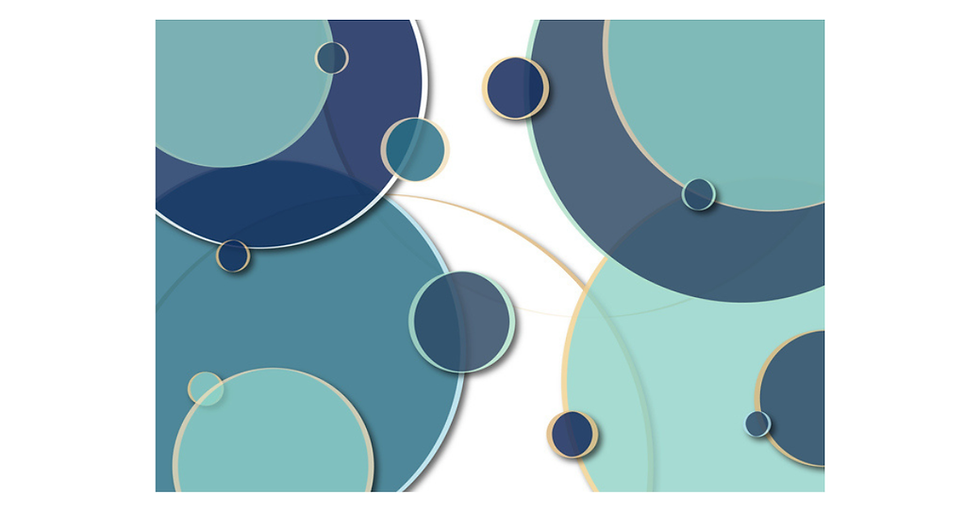What Kind of Leader Stays in the Loop?
- Russell Fitzpatrick, PhD

- May 14
- 4 min read
In the AI development world, the acronym HITL stands for “Human-in-the-Loop”. It describes an approach to building advanced systems where human oversight is embedded to ensure quality, ethics, or decision validation. Whether in self-driving cars, generative AI, or algorithmic decision-making, HITL acknowledges a critical truth about our current times: machines, however powerful, still need human judgment somewhere in the chain.
In the world of human and leadership development, I see this a little differently. Yes, the human must be in the loop—but more importantly, the human must evolve within the loop to keep up with the machine. The beauty of this shift is that it reframes AI’s productivity gains as a doorway to something deeper, the opportunity to grow beyond what we thought was possible. In my work, I call this Human-AI Synergy. It’s not about humans supervising machines. It’s about humans expanding themselves through relationship with intelligent systems. It’s a developmental partnership.
AI is changing the conditions of leadership in real time. Decisions are faster. Information is infinite. Thinking is externalized. The leaders I work with are experiencing it all:
Many feel overwhelmed. Already burdened by lack of time, they don’t have the capacity for learning how to use AI, or even processing all the different kinds of AI and potential uses.
Others feel behind, threatened, unsure of their relevance in a rapidly shifting landscape.
Some feel energized, curious and inspired at the possibilities, but haven’t figured out how to incorporate the technology into their leadership operating systems.
A few trendsetters feel excited and curious. They’re energized by the new capabilities, brainstorming with ChatGPT, leveraging LLMs as a second brain.
This is a human development moment. Leaders don’t just need more information. They need a new way of relating to their own cognition. They need to understand how to integrate AI as an extension of thought, not a competitor to it. They need to evolve how they perceive, decide, focus, and create.
Let me share an example. A leader I recently coached had been relying heavily on AI to prepare reports and synthesize market data. On paper, everything was working. But in conversation, it was clear she no longer used her own thinking. She had offloaded tasks and authority. When we dug deeper, she realized she hadn’t paused in weeks to question the outputs or reflect on what was missing. Her confidence wasn’t growing; it was eroding. She was in the loop—but passively. The system still needed a human, but she had stopped being fully present in that role.
If you're a coach or a people developer, the invitation is clear:
Don’t just help people stay in the loop. Help them transform inside it.
The most important thing we can do right now is develop the humans who are interacting with these systems every day. We need leaders who can:
Pause before reacting to machine output.
Collaborate with AI as a partner, not a crutch.
Use AI to extend perception, not collapse it.
Cultivate presence in an era of constant acceleration.
Rewire their thinking patterns to match the scale and speed of intelligent tools.
In other words, we need Synergistic Leaders.
Synergistic Leadership isn’t about resisting technology. It’s about evolving through it. It asks leaders to become more aware, not less. More intentional, not more reactive. It’s not a return to analog wisdom or a leap into machine logic. It’s the development of a new kind of mind: reflective, adaptive, expansive.
What does that look like in practice?
A Synergistic Leader uses AI to simulate scenarios, but applies human values to choose between them. They consult machine insight, but return to their inner compass when something feels off. They use automation to free up time, not to do more busywork, but to think more deeply. They actively reflect on how their identity is shifting as they partner with machine intelligence. They see themselves as co-evolving within the loop.
Already, I see leaders using AI to support their workflows, analyze scenarios, test assumptions, and enhance communication. But I also see how easily this powerful tool can become a crutch. The danger is not that leaders will be replaced by AI, but that they will stop thinking altogether, delegating judgment, ethics, or creativity without realizing what’s been lost.
That’s why leadership development needs to go deeper than behavior or skills. We need to help leaders rewire their cognitive habits, how they pay attention, how they reflect, how they make decisions, how they process complexity.
This is the inner work of the AI era. A coach can help a leader examine the assumptions behind the questions they ask an AI. A coach can help them sit with uncertainty when the machine offers a clean answer that doesn’t feel quite right.
AI doesn’t make coaching obsolete. It makes coaching essential. So if you’re a coach, here’s your call to action:
Start learning how AI tools actually work.
Explore how your clients are using (or avoiding) them.
Introduce reflection practices that help leaders discern when to trust, when to override, and when to pause.
Expand your own awareness of how leadership identity is shifting in response to machine integration.
AI is not the end of leadership…or coaching. It’s the evolution of leadership and coaching. And the best thing we can do is evolve with it. We don’t just need humans in the loop. We need evolved humans in the loop.
We need leaders who can think with machines. We need leaders who have the courage to evolve their own consciousness alongside the systems they shape.
That is the opportunity in front of us. Not just a new way to lead, but a new kind of leader.
Watch for My New Book:
The AI-Enhanced Leader: How to Upgrade Your Thinking and Leading
Launching June 10, 2025.




Comments